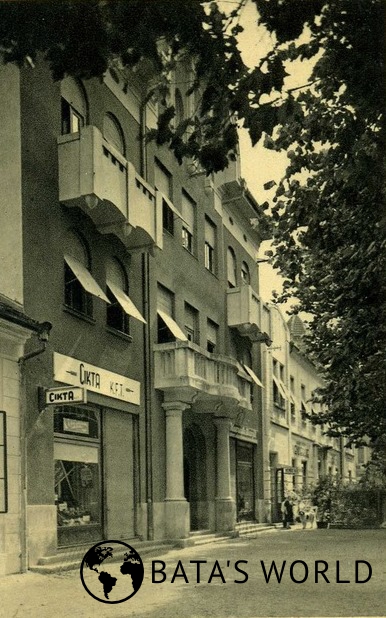The Bata Shoe Company established a sister company in Hungary in 1931, which nevertheless did not develop its activities. After a political decision the South of Slovakia was annexed by Hungary and a Bata factory and a part of the retail network found themselves in the Hungarian territory. This was followed by a new factory set up in the Tisa valley. After 1945 the Bata Hungarian company was excerpted from the Bata property.
- In the year 1931 a company Magyar Bata Cipöipar, r. t., Budapest was founded; its establishment became official in the spring of 1932, but nevertheless during 1932 -1933 the firm did not conduct any business.
- In the year 1935 the Bata Company received a judicial warning about its obligation to issue a balance and in the spring of 1936 the Bata Company officially deleted its Hungarian firm from the register.
- The export of the Bata Company to Hungary gradually decreased: 118, 000 pairs (in 1928), 18, 000 pairs (in 1932), 6, 000 pairs (in 1935) and 16, 000 pairs (in 1938).
- On 11th October 1938 a sister company Cikta, Cipögyártási és kereskedelmi társaság kor. fel. Komárom was established with the headquarters in Nové Zámky; Cikta took over the business of the Bata Company in the former Czechoslovak territories annexed by Hungary – the factory Nové Zámky and a retail network consisted of 120 stores; in the year 1941 after the occupation of Yugoslav Vojvodina, another 69 stores came under the management of Cikta.
- In the spring of 1940 the Cikta Company asked for a permission to build a factory in Martfü – the Hungarian Government granted the permission in order to support decentralisation of industry in the country.
- 1940 – the Cikta company bought 300 ha of land in the valley of the river Tisa, in Martfü near Tiszaföldvár.
- 1941 – the architect Jiří Voženílek, who worked in the Bata´s Company Central office in Zlín, made an urbanistic plan of an industrial and estate area in Martfü and the same year the construction of the factory began.
- In the year 1942 production in Martfü began after relocation of leather shoes production from the factory in Nové Zámky (where the rubber workshop remained).
- In August of 1943 the headquarters were also transferred to Martfü, as well as a major part of production from Nové Zámky; construction of the production and estate area continued.
- During the years 1942-1943 several buildings were finished, among them factory buildings, a group of family houses and a boarding house for the unmarried.
- The number of employees in factories Nové Zámky and Martfü gradually increased: from 1,142 (in 1939), to 1,881 (in 1942), and to 2,392 (in 1944).
- On 14th October 1942 a sister company Kotva, Budapest was founded for trading with various goods.
- After the war, parts of the Cikta Company were divided according to the restored states and their territories, Nové Zámky in Czechoslovakia and Martfü in territory of Hungary.
- In the year 1945 the factory in Nové Zámky was nationalised in accordance with the Czechoslovak laws; the issue of the Bata Shoe Company property in the Hungarian lands was solved by a Czechoslovak-Hungarian protocol from 25th July 1949 – and the company became the property of the Hungarian state.
Sources:
- Martin Marek, Bouřlivá léta: Baťovské podnikatelské aktivity v širší střední Evropě za druhé světové války, In: Slovanský přehled – Slovanské historické studie, 3/2014, roč. 100, s. 629-687. ISSN 0037-6922
- David Kolumber, Spory o Baťův odkaz, Ostrava 2016, ISBN 978-80-7418-252-5
- Martin Jemelka – Ondřej Ševeček, Tovární města Baťova koncernu, Praha 2016, ISBN 978-80-200-2635-4
- Kálmán Hegedüs, Tisza Cipögyár Martfü, Szolnok 1974
- Moravský zemský archiv v Brně – Státní okresní archiv Zlín, Česko


